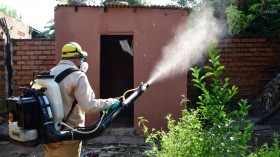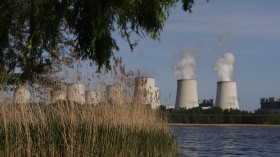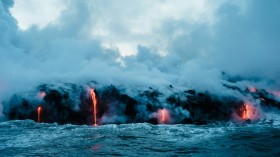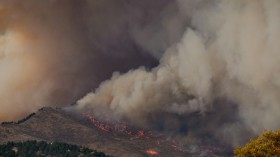Reservoirs of silica-rich magma such as those present in Yellowstone National Park can sustain without triggering an eruption for many hundred years, a new study has found. These kinds of volcanoes have the most explosive kind of eruptions.
The study was conducted by researchers at University of Washington and colleagues who found that molten rock or silica-rich magma stays just beneath the earth's crust for hundreds of thousands of years.
The study challenges the findings of other research models which suggest that molten rock stays below the earth's crust for a short duration and that massive amount of magma is required to build-up a pressure that can cause a dramatic eruption.
"You might expect to see a stewing magma chamber for a long period of time and it doesn't necessarily mean an eruption is imminent," said Sarah Gelman, a UW doctoral student in Earth and space sciences.
In this study, researchers accounted for other behavior of this type of magma- its changes in the crystallization along with temperature-dependent heat conductivity. They found that the magma can stay in molten state below the earth's surface for a very long time and can accumulate for a much longer duration.
Igneous rocks are formed when magma crystallizes and there are two types; plutonic and volcanic. Researchers are yet to find the relationship between these two rock formations. Plutonic magma is seen in Yosemite National Park, which forms a craggy granite formation and doesn't erupt. Volcanic (extrusive) magma can be found at Hawaii's Kilauea Volcano or Mount St. Helens in Washington state- these volcanoes keep oozing out magma.
The popular assumption about these volcanoes is that plutonic formations are the result of a violent volcanic eruption.
According to Gelman, there might be magma chambers beneath the plutonic volcanoes that keep feeding the volcano, which is surrounded by regions of magma that is turning into plutonic rock.
Silica begins to crystallize when it is pushed from lower crust to the upper crust and so it can be used to find the duration of the magma's presence in the upper crust.
The higher the magma is the higher is the level of silica crystals. Researchers said that this magma will behave differently from magma that is lower in the earth's crust and has low levels of silica crystals.
Currently, they can locate magma reservoirs or pools beneath the volcanic arcs. These arcs are found in subduction zones around the world- such as Andes Mountains of South America and the Cascades Range of the Pacific Northwest. A subduction zone is where a tectonic plate moves over other plate.
However, they can't find how long the magma pools have been there. This study shows that the levels of crystallized silica could be used to estimate the age of the reservoir.
"If you see melt in an area, it's important to know how long that melt has been around to determine whether there is eruptive potential or not," Gelman said in a news release. "If you image it today, does that mean it could not have been there 300,000 years ago? Previous models have said it couldn't have been. Our model says it could. That doesn't mean it was there, but it could have been there."
The study is published in the journal Geology.
© 2024 NatureWorldNews.com All rights reserved. Do not reproduce without permission.





